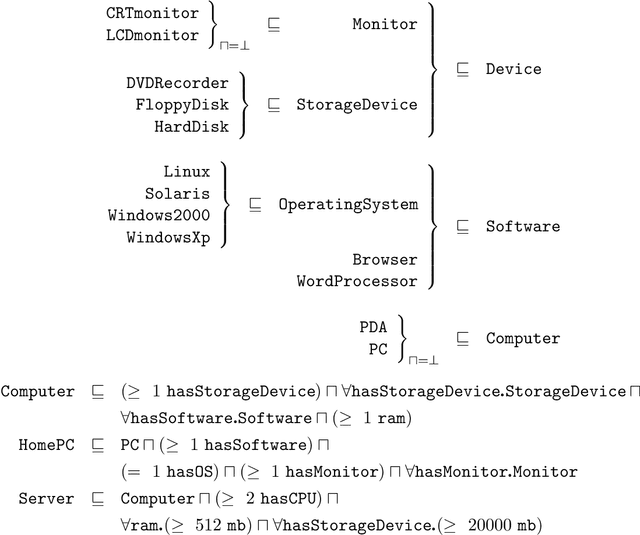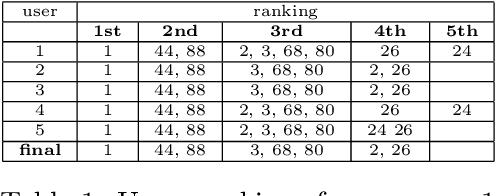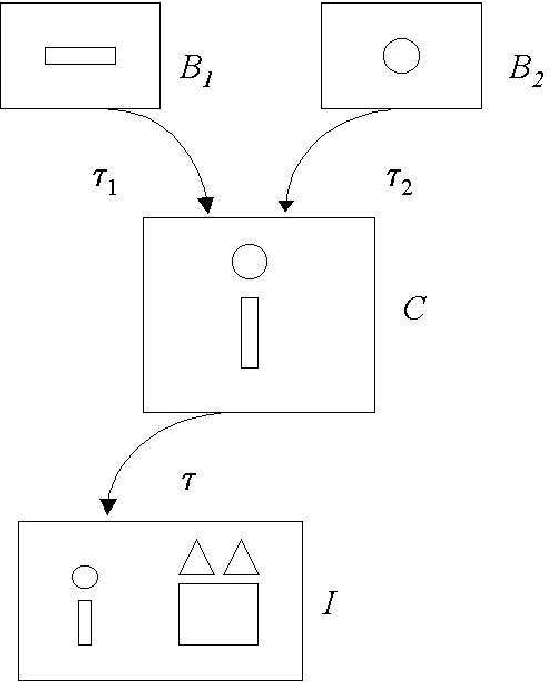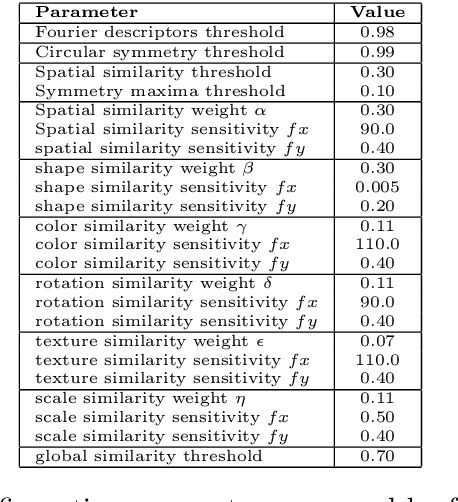F. M. Donini
Semantic Matchmaking as Non-Monotonic Reasoning: A Description Logic Approach
Oct 12, 2011



Abstract:Matchmaking arises when supply and demand meet in an electronic marketplace, or when agents search for a web service to perform some task, or even when recruiting agencies match curricula and job profiles. In such open environments, the objective of a matchmaking process is to discover best available offers to a given request. We address the problem of matchmaking from a knowledge representation perspective, with a formalization based on Description Logics. We devise Concept Abduction and Concept Contraction as non-monotonic inferences in Description Logics suitable for modeling matchmaking in a logical framework, and prove some related complexity results. We also present reasonable algorithms for semantic matchmaking based on the devised inferences, and prove that they obey to some commonsense properties. Finally, we report on the implementation of the proposed matchmaking framework, which has been used both as a mediator in e-marketplaces and for semantic web services discovery.
Structured Knowledge Representation for Image Retrieval
Jun 30, 2011



Abstract:We propose a structured approach to the problem of retrieval of images by content and present a description logic that has been devised for the semantic indexing and retrieval of images containing complex objects. As other approaches do, we start from low-level features extracted with image analysis to detect and characterize regions in an image. However, in contrast with feature-based approaches, we provide a syntax to describe segmented regions as basic objects and complex objects as compositions of basic ones. Then we introduce a companion extensional semantics for defining reasoning services, such as retrieval, classification, and subsumption. These services can be used for both exact and approximate matching, using similarity measures. Using our logical approach as a formal specification, we implemented a complete client-server image retrieval system, which allows a user to pose both queries by sketch and queries by example. A set of experiments has been carried out on a testbed of images to assess the retrieval capabilities of the system in comparison with expert users ranking. Results are presented adopting a well-established measure of quality borrowed from textual information retrieval.
Space Efficiency of Propositional Knowledge Representation Formalisms
Jun 01, 2011



Abstract:We investigate the space efficiency of a Propositional Knowledge Representation (PKR) formalism. Intuitively, the space efficiency of a formalism F in representing a certain piece of knowledge A, is the size of the shortest formula of F that represents A. In this paper we assume that knowledge is either a set of propositional interpretations (models) or a set of propositional formulae (theorems). We provide a formal way of talking about the relative ability of PKR formalisms to compactly represent a set of models or a set of theorems. We introduce two new compactness measures, the corresponding classes, and show that the relative space efficiency of a PKR formalism in representing models/theorems is directly related to such classes. In particular, we consider formalisms for nonmonotonic reasoning, such as circumscription and default logic, as well as belief revision operators and the stable model semantics for logic programs with negation. One interesting result is that formalisms with the same time complexity do not necessarily belong to the same space efficiency class.
Decidable Reasoning in Terminological Knowledge Representation Systems
Dec 01, 1993Abstract:Terminological knowledge representation systems (TKRSs) are tools for designing and using knowledge bases that make use of terminological languages (or concept languages). We analyze from a theoretical point of view a TKRS whose capabilities go beyond the ones of presently available TKRSs. The new features studied, often required in practical applications, can be summarized in three main points. First, we consider a highly expressive terminological language, called ALCNR, including general complements of concepts, number restrictions and role conjunction. Second, we allow to express inclusion statements between general concepts, and terminological cycles as a particular case. Third, we prove the decidability of a number of desirable TKRS-deduction services (like satisfiability, subsumption and instance checking) through a sound, complete and terminating calculus for reasoning in ALCNR-knowledge bases. Our calculus extends the general technique of constraint systems. As a byproduct of the proof, we get also the result that inclusion statements in ALCNR can be simulated by terminological cycles, if descriptive semantics is adopted.
* See http://www.jair.org/ for any accompanying files
 Add to Chrome
Add to Chrome Add to Firefox
Add to Firefox Add to Edge
Add to Edge